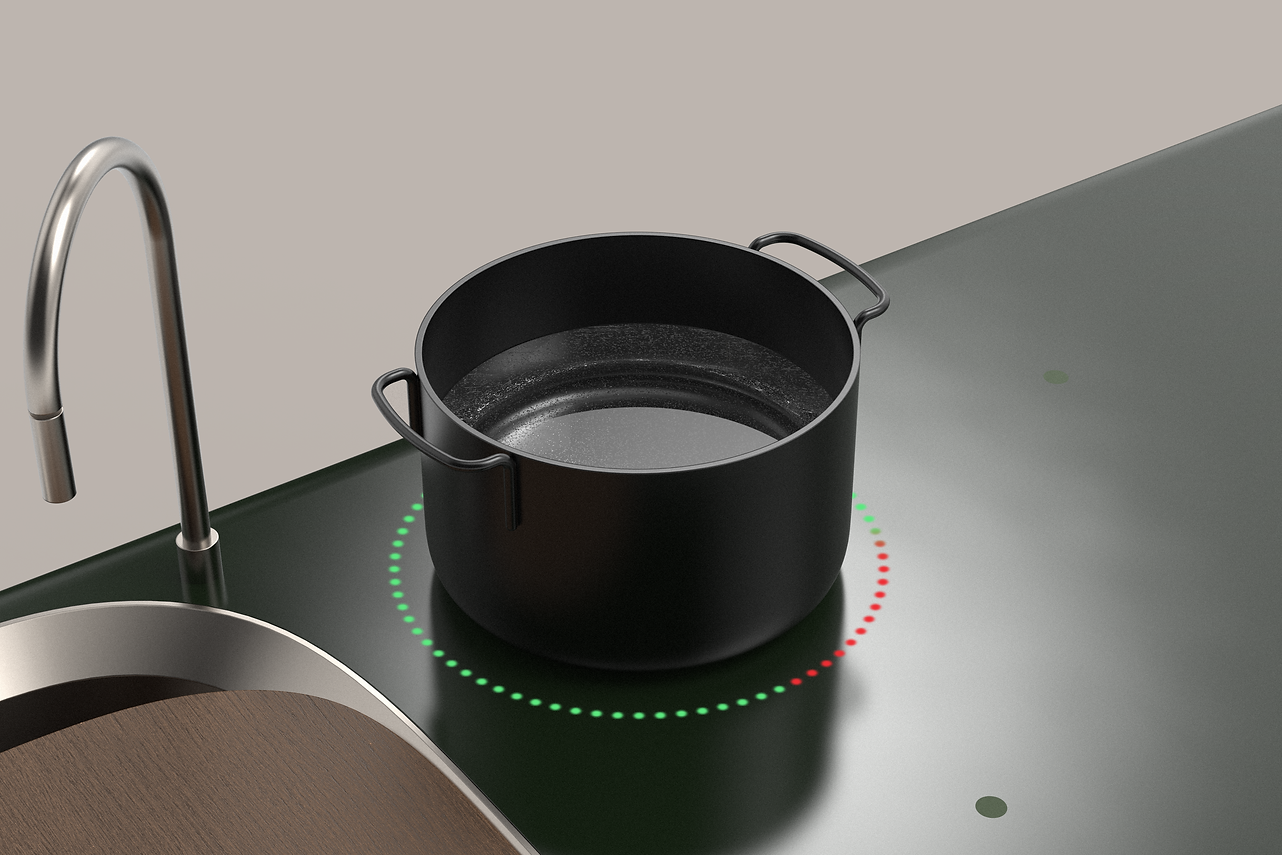Edible Bowl
2013
The Royal college of Art
Short term project/Solo project
Plastic is a substance the earth cannot digest. This edible bowl is made of several natural ingredients to address this issue. The bowl is shaped and solidified through strong pressing process, so that it would not be broken nor melt easily. Even though the edible bowl is not a perfect alternative, it provides intellectual curiosity to those seeking environmentally friendly materials.






2023
IDEO Internal Project
Team
Industrial designers, Interaction designer, software engineer
We worked through some truly intriguing questions that are influencing our approach to shaping the sustainable future.
How could innovations in our electric future revolutionize our kitchen system leading to a healthier body, community, and planet?
How might we make the transition to electrified living more delightful, accessible, & even personally meaningful?


The modular power pantry system breaks down the traditional refrigerator and storage into modular components, transforming the way we store, preserve and even reheat food. It allows users to control individual units separately. The advantages of adopting this modular approach includes energy efficiency, space optimization, customizable features and sustainable eating.
Imagine multi-purpose storage units with plug & play capability, like the Power Pantry, that can keep different food and drink fresh, monitor quality, store utensils, charge devices, and even grow food.
Just like the iphone brought together all our tools, electrification will enable the home to bring together our needs in a more efficient and personal way.

Amp up Your Energy Efficiency! One of the most significant benefits of the deconstructed refrigerator is its potential for energy efficiency. With separate cooling compartments, each module operates independently, allowing users to power only the sections they need. This targeted cooling can substantially reduce energy consumption, lowering utility costs and decreasing the household's carbon footprint. Moreover, the independent modules can be equipped with individual temperature controls, ensuring optimal energy usage based on the stored items' requirements.

The Power Pantry concept created the way we approach healthy and sustainable eating. By exploring how kitchen products can contribute to sustainable food consumption, this design aims to promote changes in food consumption behaviors.
The concept features a pantry that highlights animal sourced proteins such as meat and eggs at eye level, with full visibility. This unique placement encourages users to treat these proteins with respect and appreciate every bite, while also allowing them to visibly track the time left for vegetables and other ingredients, reducing food waste.
To further encourage sustainable eating habits, the Power Pantry concept includes an assistant app that visualizes the user's eating habits and their impact on the environment.

Get Creative with Your Cooling Space. A modular approach to refrigeration allows for space optimization and personalized solutions in the home. Deconstructed refrigerator units can be stacked vertically or positioned side by side, maximizing available space and accommodating individual preferences. The modular design also enables easy relocation or reorganization of units to adapt to changing lifestyles.
Users can select from a variety of functional modules to create a solution tailored to their specific needs. These features can include wine cellar, fermentation, probing, indoor garden, food 3d printing on top of refrigeration.



Imagine multi-purpose surfaces that can easily switch modes, like the Untethered Countertop, that can switch between working, cutting and cooking, all while keep your products fully charged.
Untethered Kitchen is born from the idea of merging a induction stove and inductive charger. What if a surface can ‘deliver’ not only heat energy, but also electric energy to power kitchen tools? What does it unlock for the cooking experience?
This electrified countertop is a specially designed surface that uses inductive energy to power various cooking tools and appliances, eliminating the need for conventional power outlets and cords. It creates a much flexible cooking experience while being able to manage the energy consumption as the surface would works as a centralized energy system.

This electrically powered surface presents users with a significantly improved utilization of their space. By eliminating the traditional constraints of the fixed electrical outlets, appliances can now be positioned and repositioned during the cooking process, according to personal preference and convenience.
Consequently, this system fosters a more dynamic and user-friendly cooking environment, tailored to meet the unique needs and preferences of each individual.

What if we can harvest heat energy?
Another feature of this surface is storing the heat energy. By storing the remaining heat energy of used cooking tools and utilizing that energy to heat the water, this system gets one step closer to minimum energy waste.
This is just one example of thinking about energy circulation within the kitchen, where a lot of energy transfer happens between cooling and heating.
Ideation process...
